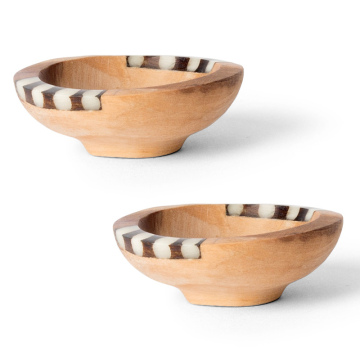Spices and Rice: A Culinary Trip to Japanese Curry
Introduction to Japanese Curry
Japanese curry, known for its rich culinary flavors and hearty texture, stands out as a distinct culinary creation within the broader category of curries found worldwide. Its origins can be traced back to the introduction of curry by the British during the Meiji era in the late 19th century. Initial recipes were adapted from Indian curry, but over time, Japanese chefs redefined the dish to align with local tastes and preferences. Instead of the spicier varieties common in India, Japanese curry is characterized by its mild culinary flavor profile, thick consistency, and the use of ingredients such as potatoes, carrots, and onions.
One of the unique aspects of Japanese curry is its diverse preparation methods and options for serving. Typically, it is enjoyed over a bed of rice, known as “katsu curry,” when served with breaded and fried cutlets, or enjoyed alongside noodles in a dish called curry udon. The fundamental components often include a curry roux, made from a blend of spices, which gives the dish its signature taste. This roux, readily available in stores, allows home cooks to quickly incorporate the essentials of curry into their meals.
The cultural significance of Japanese curry is profound; it has transformed from a foreign dish into a beloved comfort food enjoyed by families across the nation. Schools often serve curry rice on designated "curry days," reinforcing its status as a staple aspect of Japanese cuisine. Moreover, regional variations exist, reflecting local ingredients and preferences, such as Hokkaido’s seafood curry or Okinawa’s use of tropical vegetables. This adaptability ensures that Japanese curry resonates with various palates while maintaining its place as a cherished dish in Japan’s culinary landscape.
Essential Spices and Ingredients
Authentic Japanese curry is renowned for its rich, complex culinary flavors, which come from a harmonious blend of spices and ingredients. At the heart of this dish is curry powder, a pivotal component that showcases a mixture of spices such as turmeric, cumin, coriander, and fenugreek. Each of these elements contributes a unique note to the flavor profile, with turmeric providing its vibrant color and earthy warmth, while cumin and coriander add aromatic depth. Garam masala is another essential spice blend that often finds its way into Japanese curry, further enhancing the depth with warm, sweet undertones.
Beyond spices, the choice of ingredients significantly impacts the final dish. Commonly used vegetables in Japanese curry include potatoes, carrots, and onions, which contribute sweetness and texture. Potatoes break down during cooking, thickening the sauce and providing a creamy consistency that is characteristic of this cuisine. Onions take on a caramelized culinary flavor when sautéed, adding a savory component to the overall taste. Carrots offer a slight sweetness, balancing the spices harmoniously.
For proteins, variations abound. Culinary Traditional choices include chicken, beef, or pork, each bringing a unique richness that complements the sauce. Vegetarians and vegans can easily adapt this recipe by opting for tofu or a medley of seasonal vegetables, maintaining the essence of the curry while catering to dietary preferences.
The rice served alongside Japanese curry is typically short-grain white rice, known for its sticky texture that allows it to absorb the flavorful sauce effectively. However, alternatives like brown rice or quinoa can be used for those seeking healthier options. Each ingredient plays a crucial role in constructing the layered culinary flavors of Japanese curry, providing versatility for various palates and dietary needs.
How to Prepare Japanese Curry Rice
Preparing a culinary traditional Japanese curry rice dish is a delightful and straightforward culinary experience that allows home cooks to infuse their own preferences into a beloved meal. To begin, gather essential ingredients, including rice, protein such as chicken or beef, a mix of vegetables like carrots and potatoes, curry roux, and water. Start by rinsing the rice under cold water until the water runs clear, then soak it for about 30 minutes to achieve the perfect texture when cooked.
Next, chop the chosen proteins and vegetables into bite-sized pieces. Heat a tablespoon of oil in a pot over medium heat. First, sauté the proteins until they are browned and nearly cooked through. Remove them from the pot and set aside. In the same pot, add the chopped vegetables, stirring them until they soften slightly. This step enhances the culinary flavor profile of the dish.
Return the protein to the pot, and pour in enough water to cover the ingredients. Bring the mixture to a boil, then reduce the heat to low and cover the pot. Allow it to simmer for approximately 20 minutes, enabling the flavors to meld. After simmering, add the curry roux, which is pivotal in creating that distinct Japanese curry culinary flavor. Stir thoroughly to dissolve the roux completely and achieve a rich, thick consistency.
While the curry simmers, cook the rice according to package instructions. Ideally, the rice should be fluffy and sticky, complementing the curry's texture. For those seeking variations, consider adjusting the spice level by using a mild to hot curry roux or adding optional ingredients such as mushrooms for added depth of culinary flavor.
Once the curry is ready, serve it over a mound of rice, garnishing with pickled ginger or green onions for an appealing finish. Following these steps will ensure a delicious curry rice dish ready to enjoy any night of the week.
Cultural Significance and Serving Suggestions
Japanese curry holds a special place in the hearts of many in Japan, serving not only as a staple dish but also as a strong familial and cultural symbol. Originating from British curry, its adaptation and integration into Japanese cuisine reflects the nation’s ability to embrace and modify foreign influences. Families often gather around this hearty meal, and it is common for parents to prepare curry as a comforting dish for their children, particularly in school lunchboxes. The fragrant aroma of simmering curry can evoke a sense of nostalgia, often bringing back memories of childhood and family gatherings.
In addition to regular family meals, Japanese curry is also a popular choice for special occasions. It is frequently served during festive celebrations, family reunions, and when entertaining guests, making it a communal dish that fosters connection and sharing. This aspect highlights how Japanese curry transcends mere sustenance; it embodies warmth, comfort, and the spirit of togetherness. The versatility of this dish allows it to be easily adapted to suit various palates, showcasing its universal appeal.
When serving Japanese curry, numerous accompaniments can enhance the meal experience. Culinary Traditionally, it is paired with rice, often in a generous mound on the plate, allowing diners to ladle the rich, gravy-like curry over the top. Popular garnishes include finely chopped green onions, fukujinzuke (pickled vegetables), and even a sprinkling of cheese for those seeking a unique twist. For beverages, Japanese curry pairs well with light beers, chilled sake, or even herbal teas, which can complement the dish's flavors without overpowering them.
Leftovers from Japanese curry are a delightful bonus, as they often taste even better the next day. To store any remaining curry, allow it to cool completely before transferring it to an airtight container for refrigeration. It is advisable to consume the leftover curry within three to four days, reheating it thoroughly before serving. With its cultural significance and delicious serving possibilities, Japanese curry remains a beloved dish that continues to connect people across generations.





